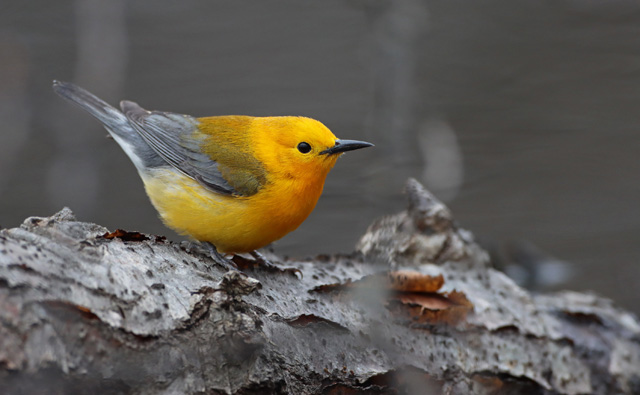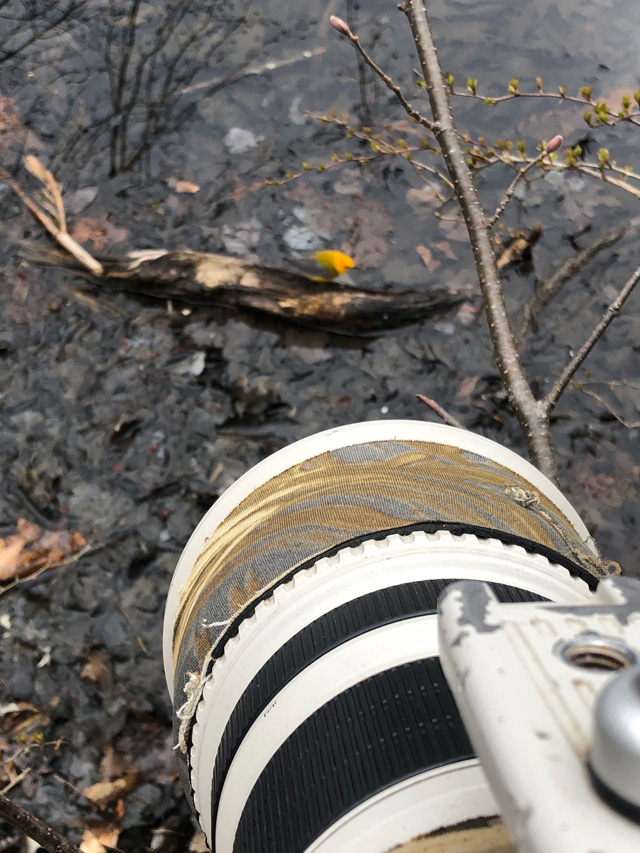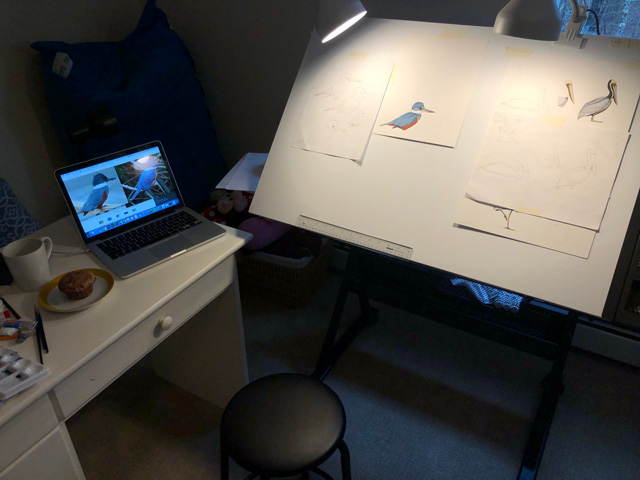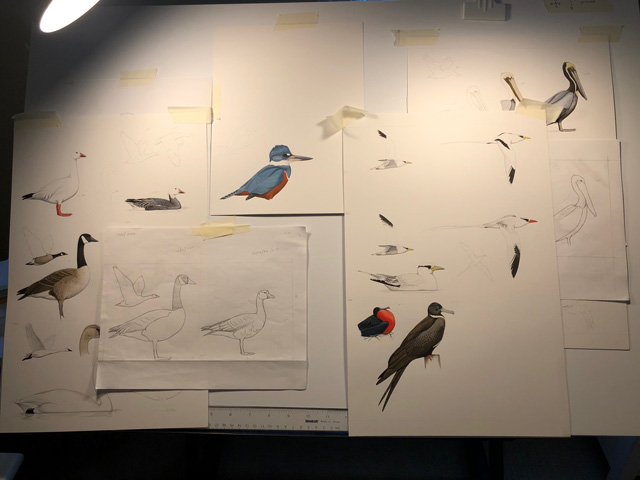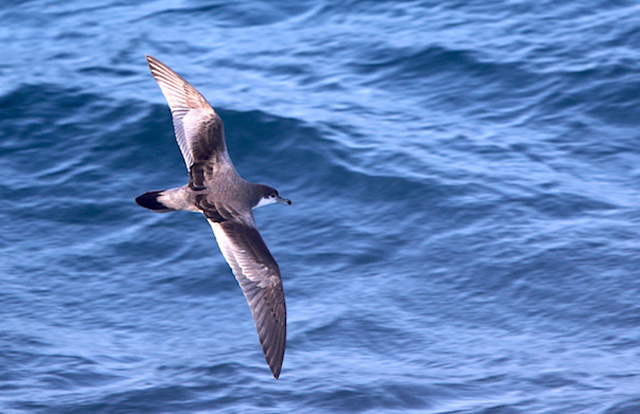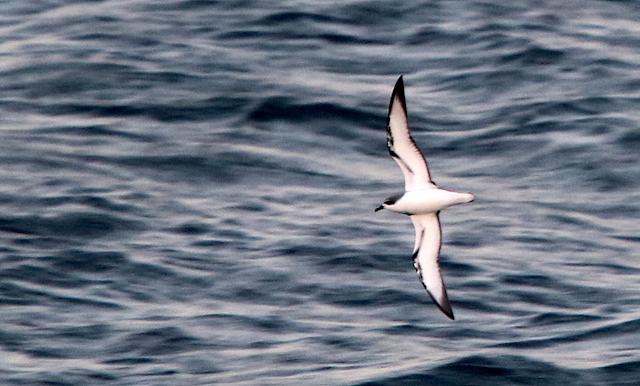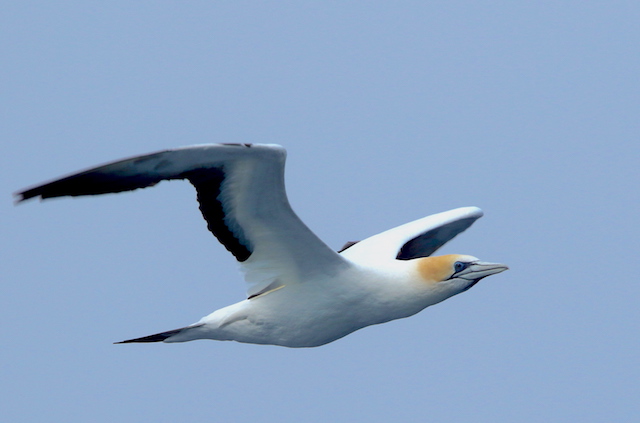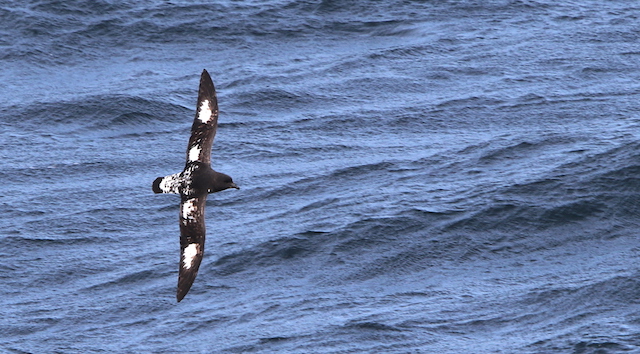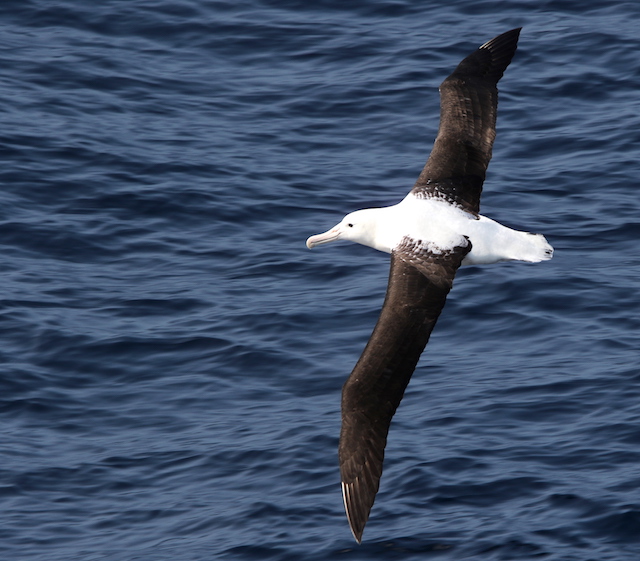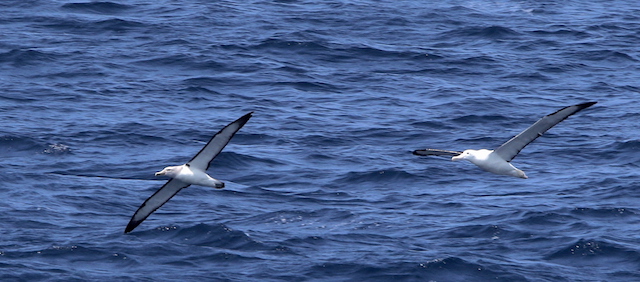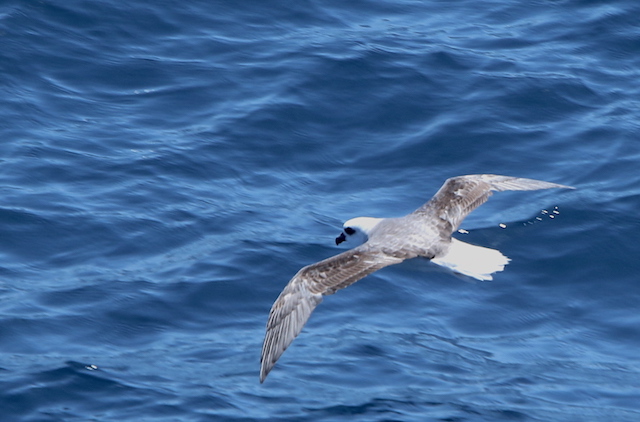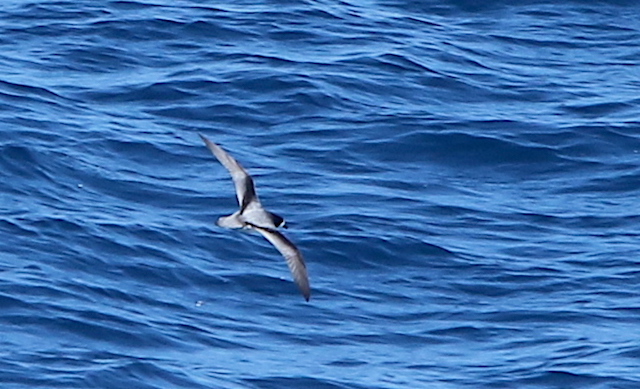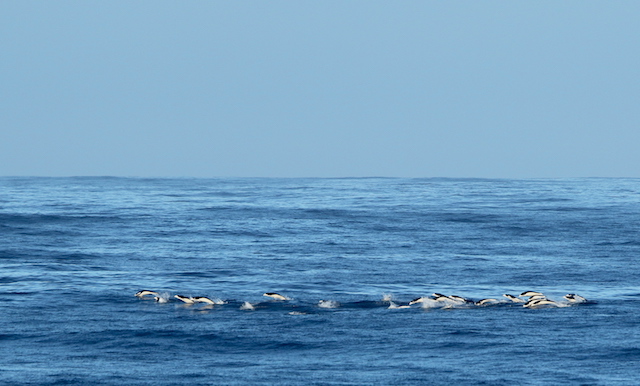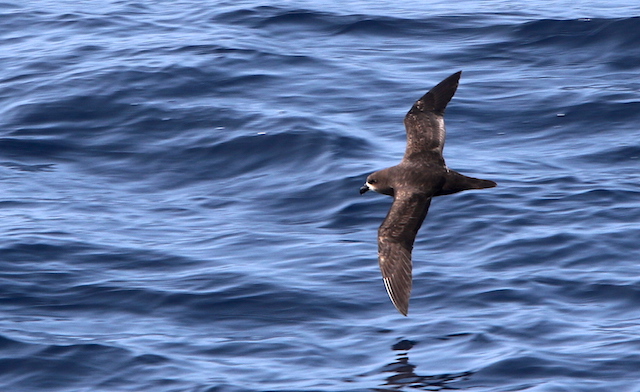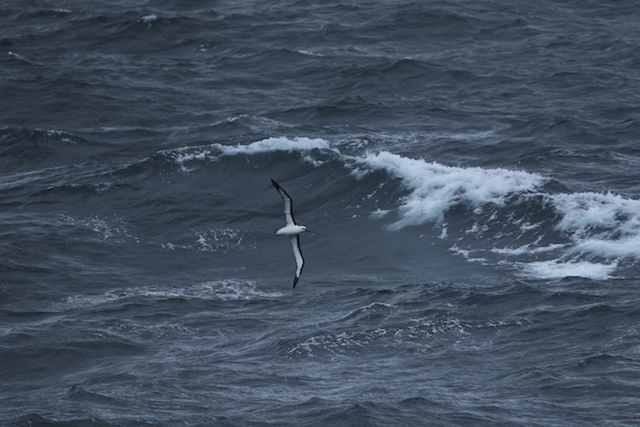From the Field
May 4:
Susan Myers on her at home photo explorations of Anna's Hummingbird.
In lieu of leading my tour in the Philippines, I decided I would just stay put and go photograph Anna’s Hummingbirds… Well, this might not be an entirely true representation of my personal recent history, I have to say that local birding in Seattle has been rewarding and fun, if rather lonely. One of my projects that I’ve set for myself is to improve on my photography skills - slow down and spend the time, work on techniques and wait for the bird to show some interesting behaviour. Anna’s Hummingbird is a common garden bird all along the west coast but it’s always a challenge to photograph them. I’ve been lucky to find a perfect model - I made the acquaintance of this male Anna’s last year and was delighted to find him back in exactly the same place this year. I’ve now spent many hours in his company, so here I present the many moods of an Anna’s Hummingbird in spring.
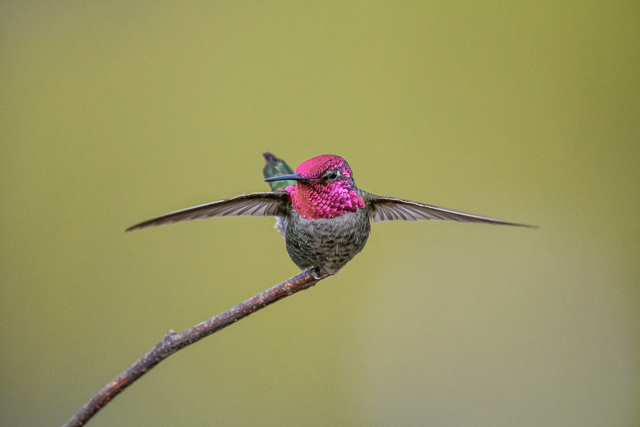
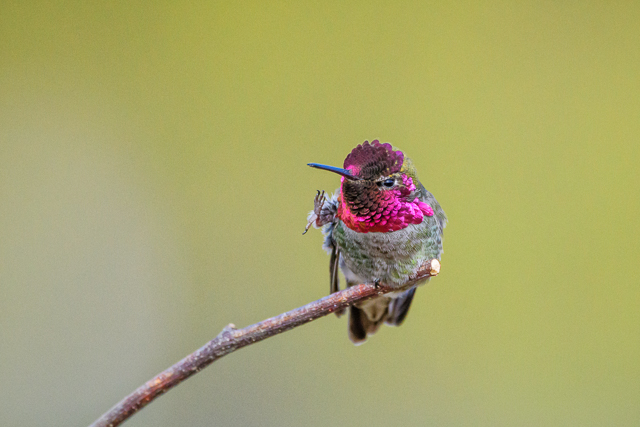
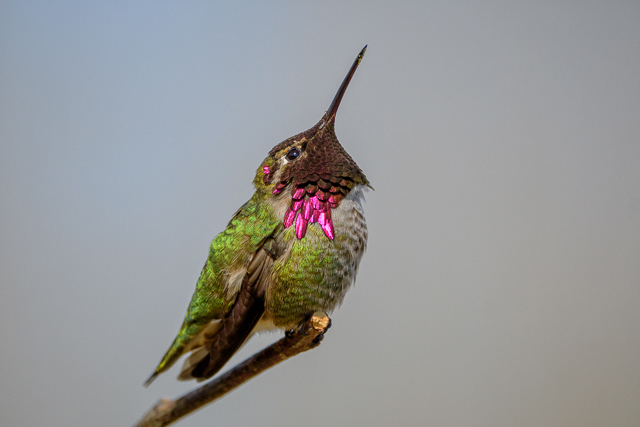
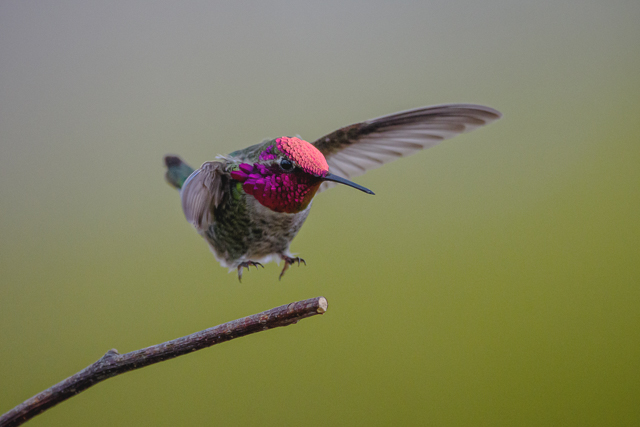
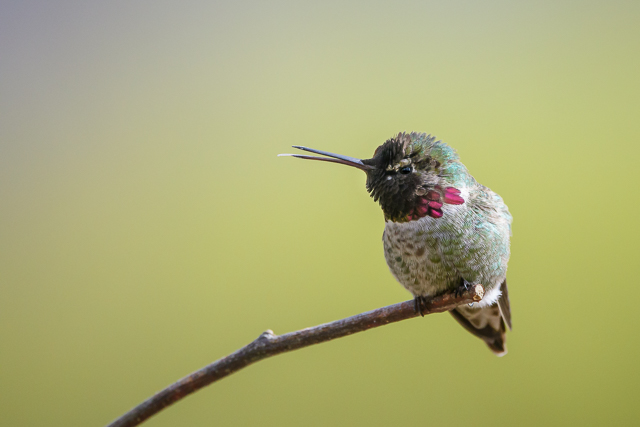
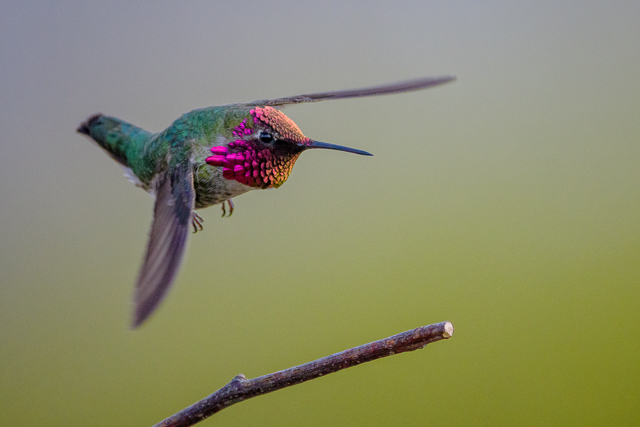
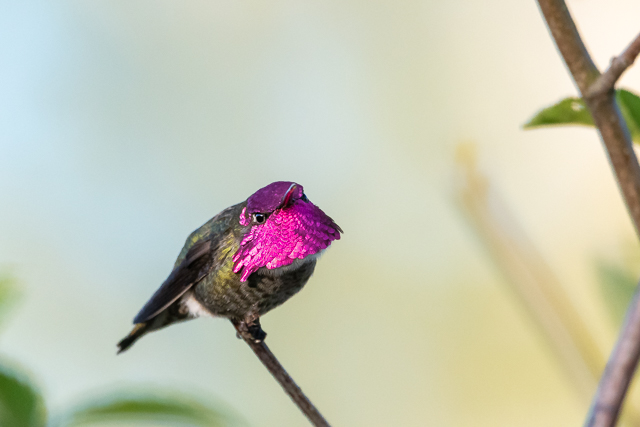
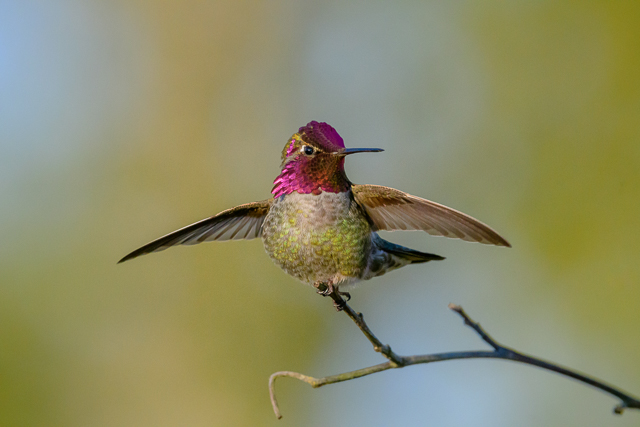
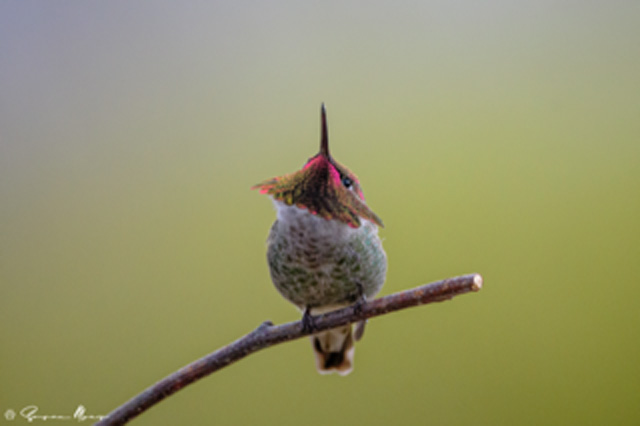
April 27:
Luke Seitz on quarantining in Maine.
April showers bring May flowers, or something like that? The past few weeks (days? months?) of quarantine/time-warp here in Maine have not felt very spring-like, although April always holds a few surprises. Pictured here is a friendly Prothonotary Warbler that showed up in a small park in Portland, viewed while wearing a face-mask and standing at least six feet away from other birders!
He seemed unconcerned about germs and droplets as he foraged along the edge of a pond, coming far too close to focus…
But most importantly, being stuck at home has been a good excuse to work on illustrations for an upcoming field guide to the birds of the Caribbean. I’m a very slow painter so feelings of progress or accomplishment are hard to come by, but there’s no better way to do it than just…sitting down and painting all day, every day, right?! Here’s the setup, including a few partially-finished plates and complete with delicious homemade raspberry muffin.
April 13:
Rich Hoyer on his recent abbreviated Jamaica tour
We ended our Jamaica tour a day early this year, with worries that the reduced number of flights back to the US might make returning home more difficult. It turned out we would have had most of our regular flights home anyway, but this year’s itinerary was a day longer than recent years, and we didn’t miss much more than a chance at some fun open country, marsh, and mudflat birding. Once again, all of the island’s amazing endemics made it to the official tour list, though Crested Quail-Dove was much less cooperative than in the past – we all heard the skulkers, but only one or two participants saw it well. But we had repeated views of everything else, saw all of the rarer endemic subspecies, and delighted in absorbing ourselves in the amazing world of island endemism amongst the lizards, butterflies, snails, and plants.
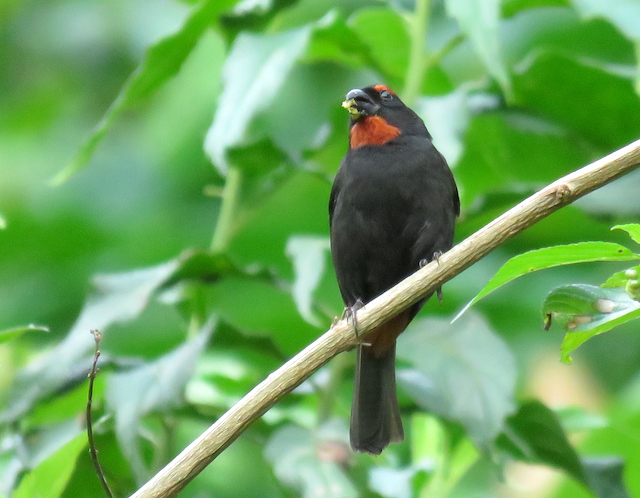
This year Greater Antillean Bullfinches were particularly common and easy to see on the Ecclesdown Road at the far eastern end of the island.
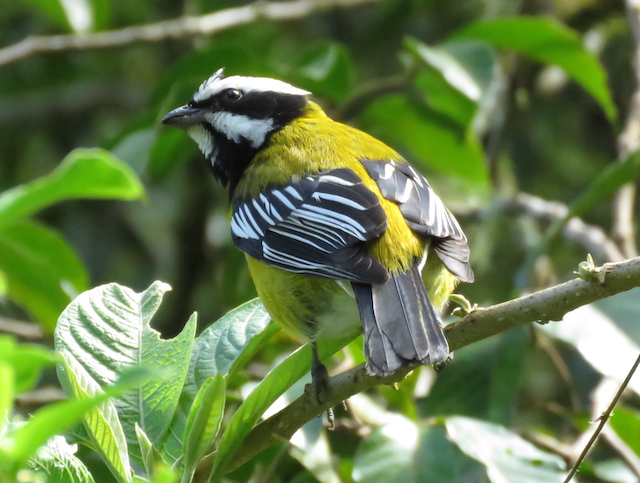
In the Blue and Port Royal mountains, this Jamaican Spindalis appeared out of nowhere just a few feet from the group and fed on flower buds.
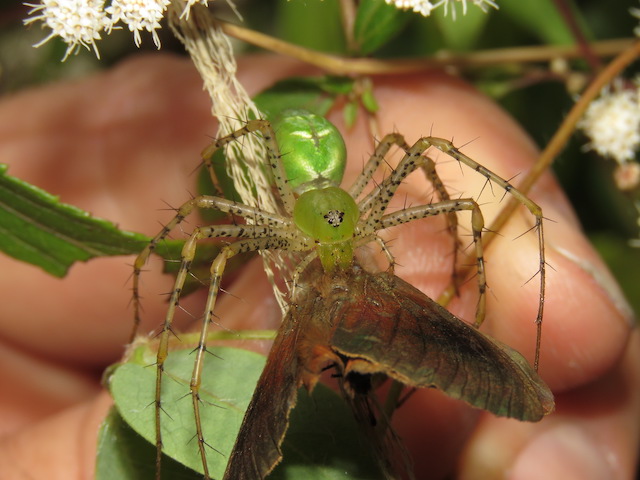
A fascinating break from the birding was provided by this lynx spider which was munching on an endemic Jamaican Calisto butterfly.
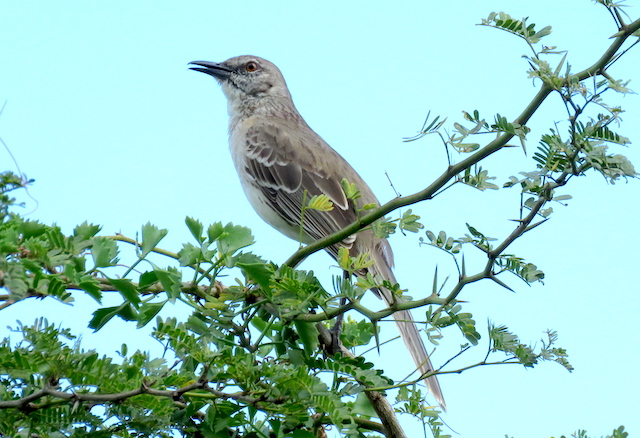
An afternoon trip to the southern end of the island was very productive, adding a rare Prothonotary Warbler and some cooperative Clapper Rails to the list in addition to a pair of this very confiding Bahama Mockingbird.
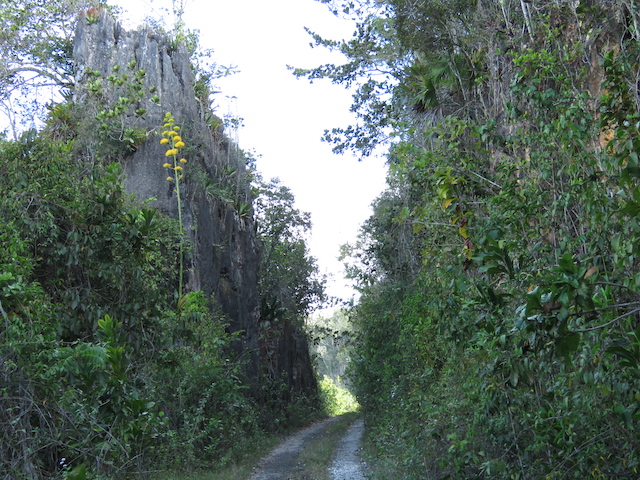
One of the highlights of the tour was getting to visit the biologically and geologically fascinating Cockpit Country.
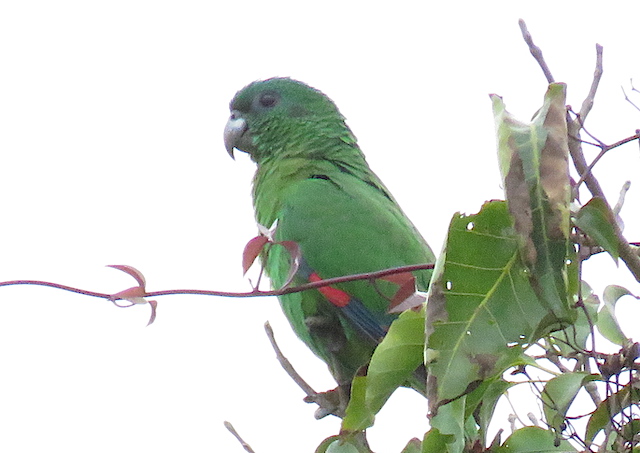
Here we finally had views of both endemic parrots perched, here the more common (this year) Black-billed Parrot.
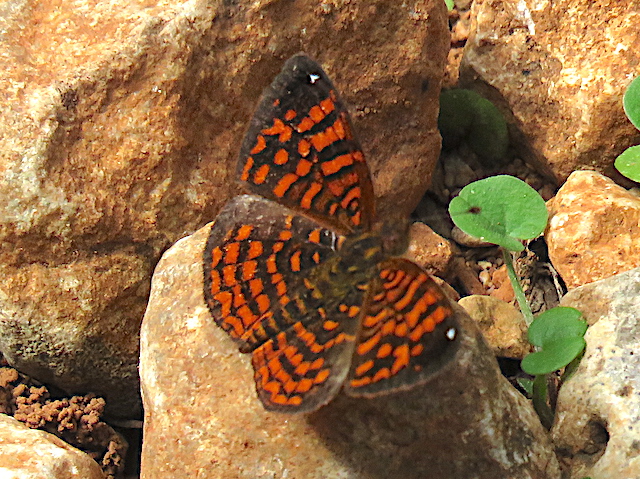
We even had a few endemic butterflies here, including this rarely seen Jamaican Crescent, Antillea proclea.
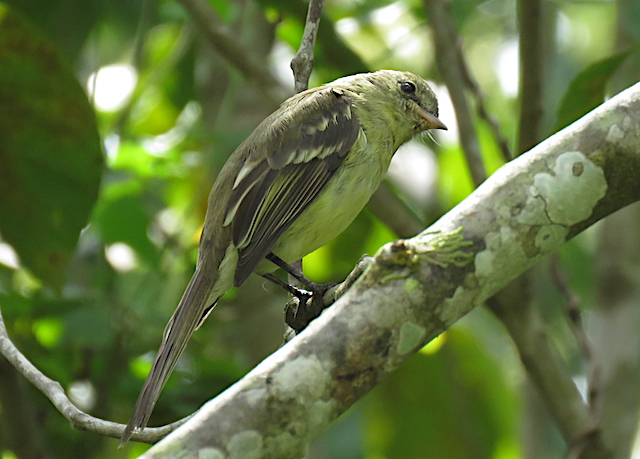
Everyone’s favorite place, as usual, was Ann Sutton’s home, the estate and great house of Marshall’s Pen. For the third time ever, we had Greater Antillean Elaenia on the grounds, but this time with the best views ever.
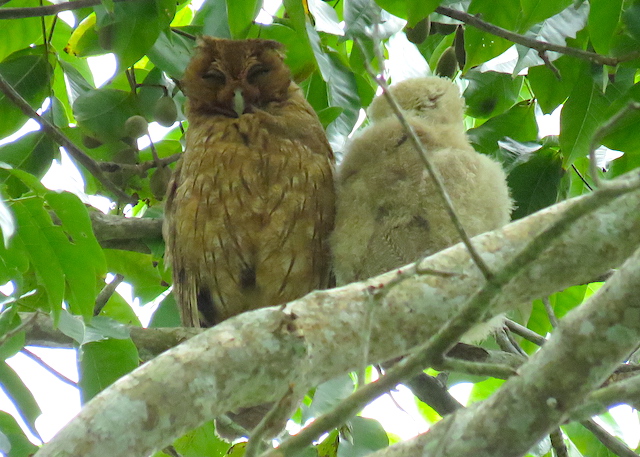
The resident pair of Jamaican Owls successfully fledged a chick earlier in the year, and we heard it nightly begging for food. On just one day were we able to find its day roost, typically right up against its mother.
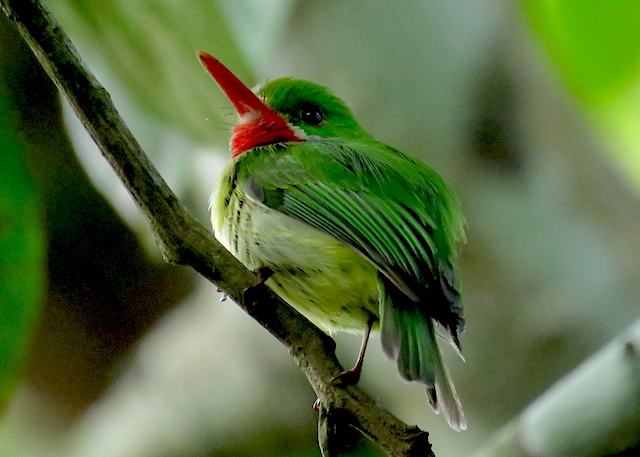
Jamaican Tody never stops eliciting oohs, ahhs, and awws, and we had our best views while at Marshall’s Pen.
March 28:
Susan Myers on her recently completed tour, Japan in Winter
Our winter tour of Japan started off in the forests of the Japan Alps with some great birds including the scarce Japanese Waxwing as well as Japanese Accentor, Japanese Green Woodpecker, and Varied Tit. We then took a brief break from our birding to visit the so-called 'Snow Monkeys,' a.k.a. Japanese Macaque, which love to take to the hot springs of the Jigokudani or Hell Valley, due to the many steaming volcanic vents dotted throughout the area.
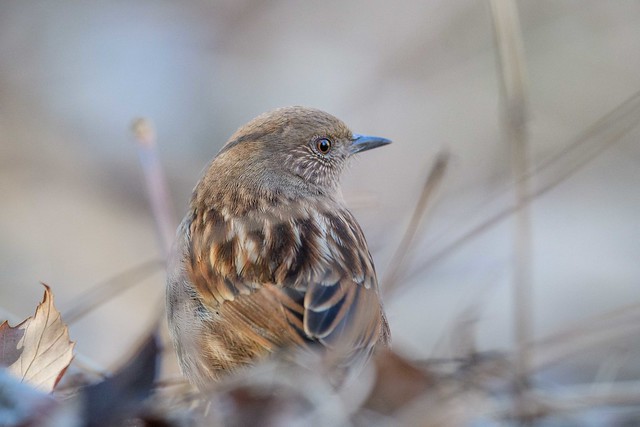
Japanese Accentor
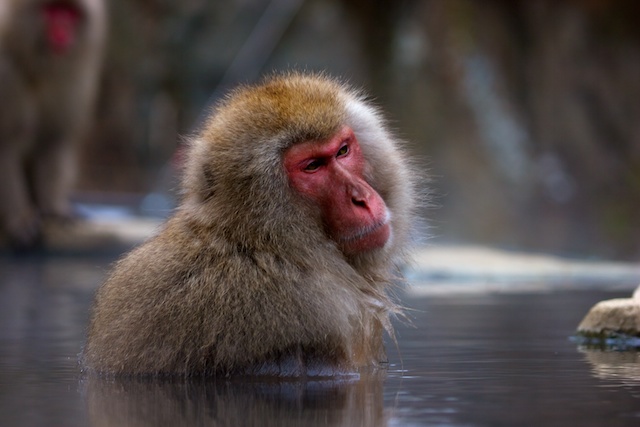
Japanese Macaque a.k.a Snow Monkey
Continuing our journey over the Alps to the Japan Sea we visited the Katano area south of Kanazawa where our main target, the increasingly rare Baikal Teal loves to spend the winter. This area is particularly rich in avian life and we found many great birds including fabulous Taiga Bean Goose, Japanese Cormorant, Smew and many others.
Flying south, we spent a couple of days in the Arasaki area to take in the amazing spectacle of over 14,000 cranes of four species, although the numbers are very much dominated by White-naped and Hooded Cranes. We picked out a single Sandhill and two Common Cranes from the many thousands of others, which was quite fun. A bonus prize was a wonderful vagrant Demoiselle Crane! We had a great day exploring the whole area with two particularly outstanding sightings, amongst many, being a collection of the very rare Black-faced Spoonbills and a small group of the often elusive and cute Chinese Penduline-Tit.
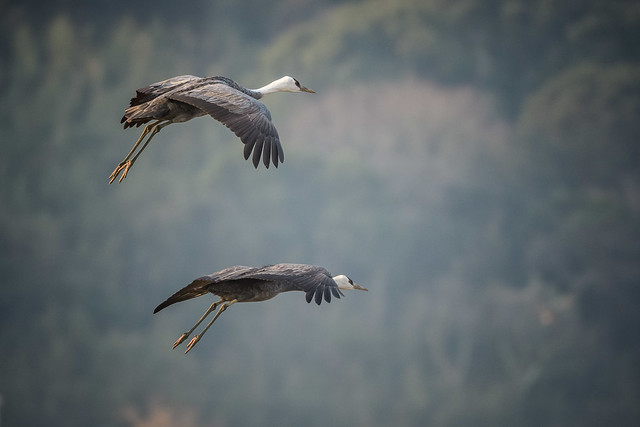
Hooded Crane
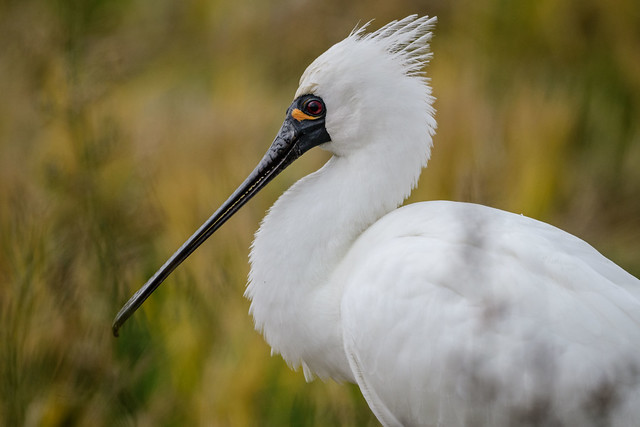
Black-faced Spoonbill
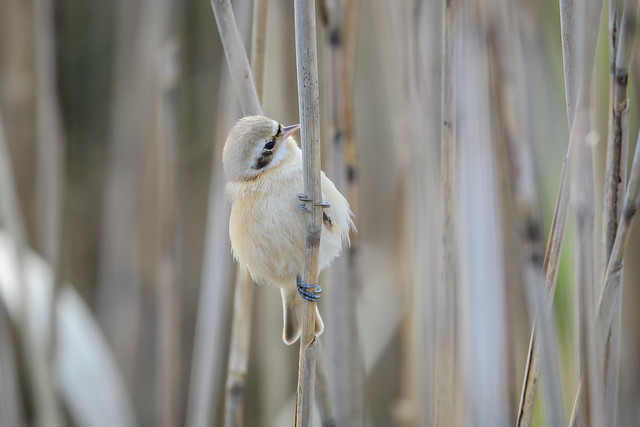
Chinese Penduline Tit
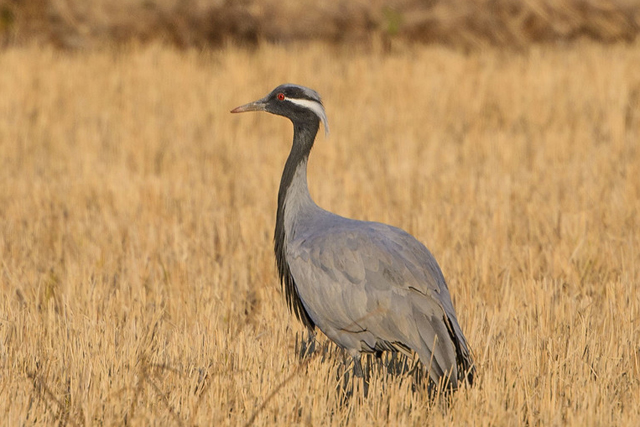
Demoiselle Crane
From the cranes, we headed east to the Kyushu coast for our meeting with the endemic and very cute Japanese Murrelet, said to be the world’s rarest Alcid. With my friend and expert skipper, Kurogi san at the helm, we headed out for the short boat trip into the harbour and soon found a small group, which we were able to watch at close range. On our return, we were met by some friendly representatives of the local tourism board who made us feel like a bunch of celebrities! And you our great delight, we were presented with gifts of Japanese Murrelet stuffed toys!
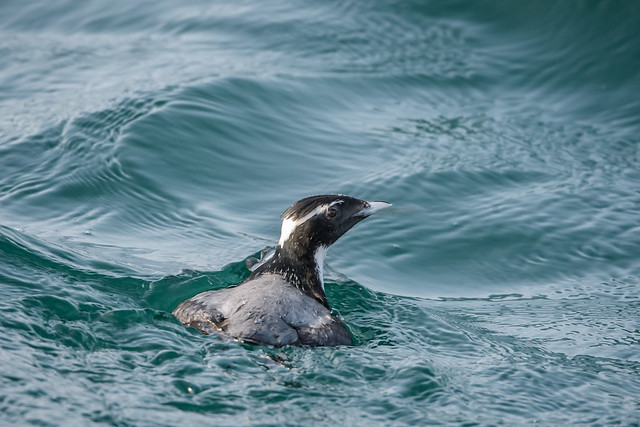
Japanse Murrelet
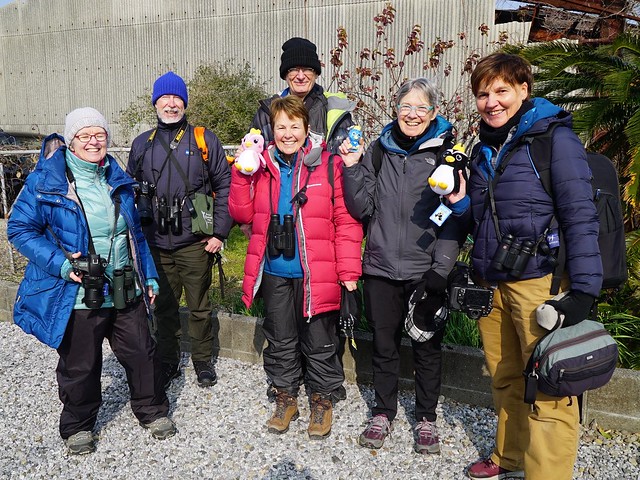
Celebrities!
This year we enjoyed some superb weather in the north and our birding on Hokkaido was fun and productive - even if a little on the cold side. Spectacled Guillemots, with their startling red legs, showed well and the Big Three; Steller’s Sea-Eagle, Red-crowned Crane and Blakiston’s Fish Owl were, well, stellar!
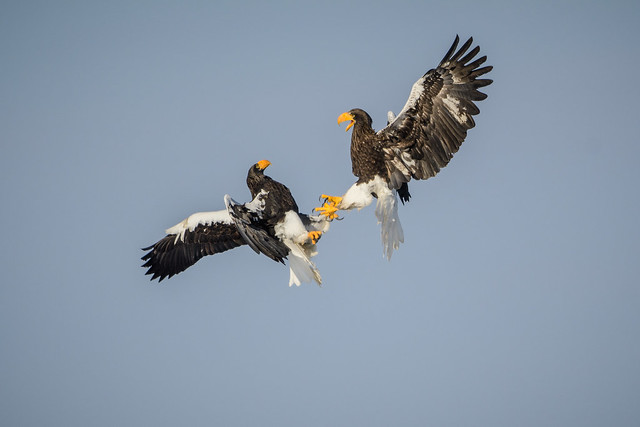
Steller's Sea Eagle
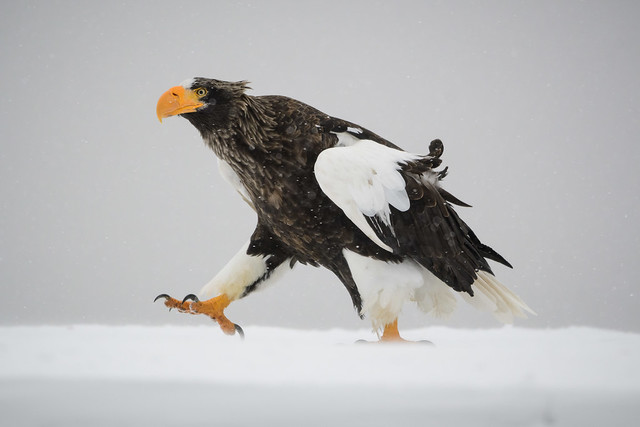
Steller's Sea Eagle
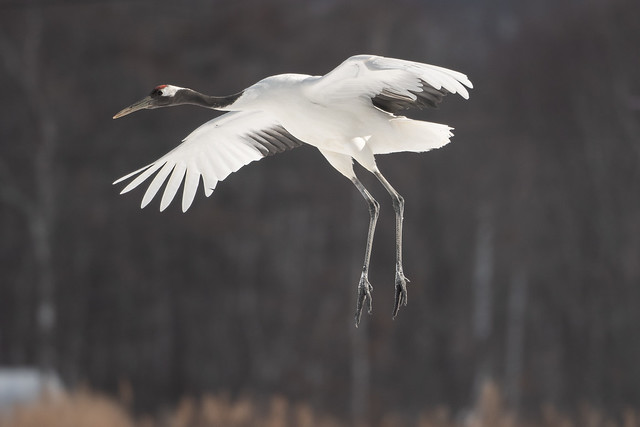
Japanese Crane
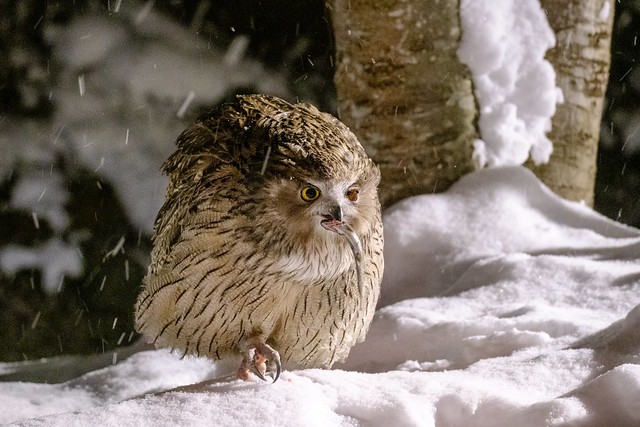
Blakiston's Fish Owl
Without doubt the Northern Island is the highlight of this journey around Japan and not only did the birds not disappoint, but the scenery, food and friendly people made for some great memories.

Another remarkable meal...
March 24:
Jake Mohlmann on his recently completed tour, Nebraska: The Sandhills and the Platte River
We just wrapped up five days cruising through the heart of the midwest in search of various avian highlights.
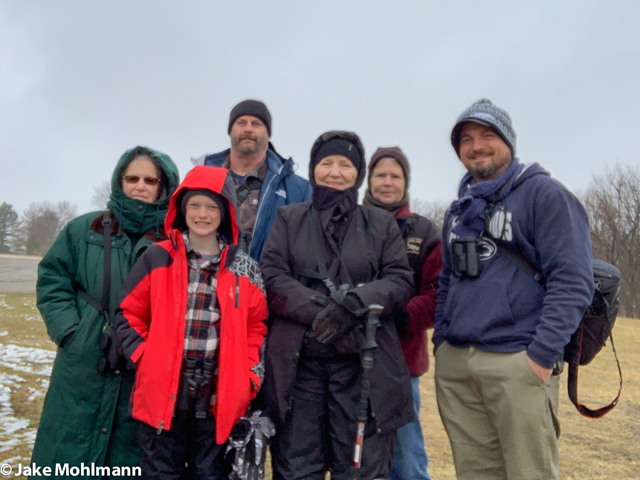
Our group thrilled to be out seeing life birds.
Our first night we marveled at the amazing aerial flight displays of recently arrived American Woodcock, picked out a lone Franklin's Gull from the droves of Ring-billed Gulls floating on Lake Manawa, and had a pair of Barred Owls land right before our eyes and stare at us with their pitch black eyes.
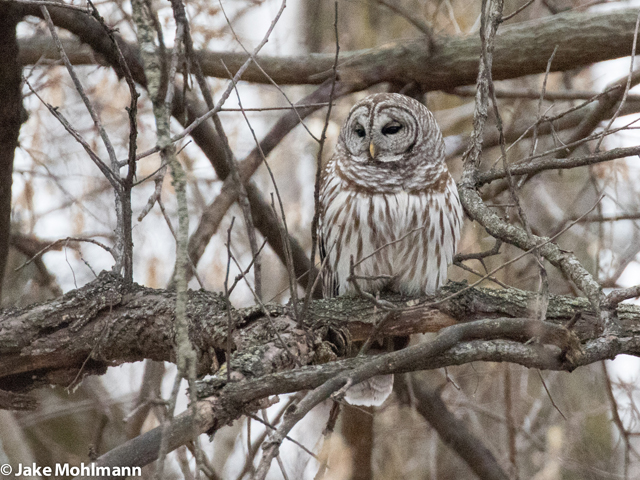
A beautiful Barred Owl was a lifer for some.
Sparrows are usually a highlight of this tour and this year was no exception. From fleeting Swamp Sparrows, to Song Sparrows melodies echoing across the marsh, bulky Fox Sparrows perched high, and the ultimate treat for any birder not from the midwest the beautiful Harris's Sparrow. This year at Schramm Park we had a total of 11 of these North American specialties.
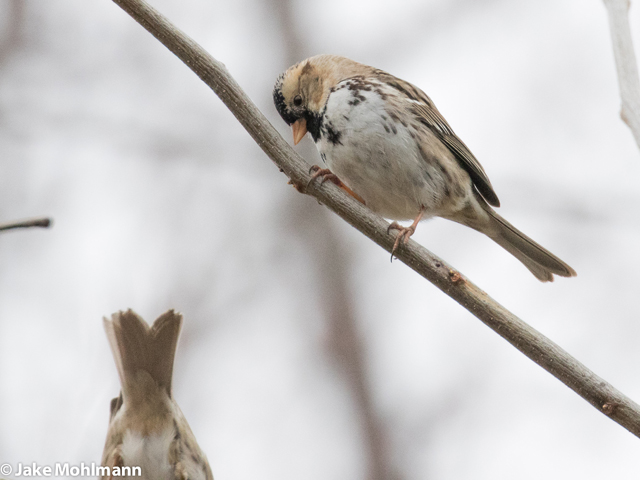
Harris's Sparrow gave extended, and fleeting, views this week.
Pileated, Red-bellied, and numerous Downy Woodpeckers were heard drumming advertisements that rang loudly through the Missouri River's hardwood forests, but recently arrived Red-headed Woodpeckers took the prize for best performer.
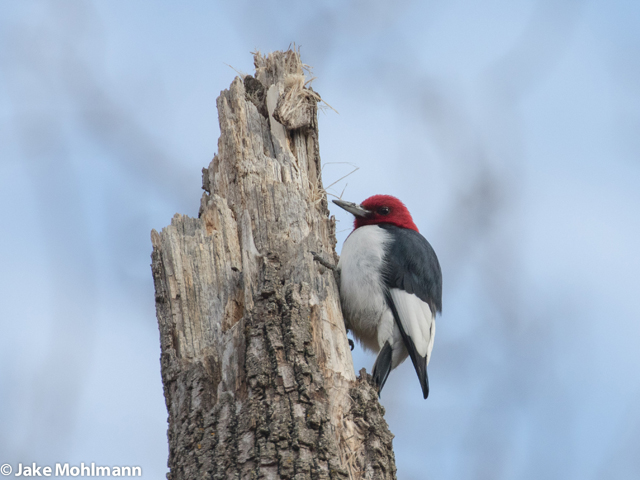
Red-headed Woodpeckers were back in force.
The Sandhill Crane show on the central Platte River was astounding, with perhaps 25,000 birds seen in the sky at one time. One day we drove for 20 miles along dirt roads with seemingly endless congregations of feeding Cranes fattening up before continuing north to their breeding grounds.
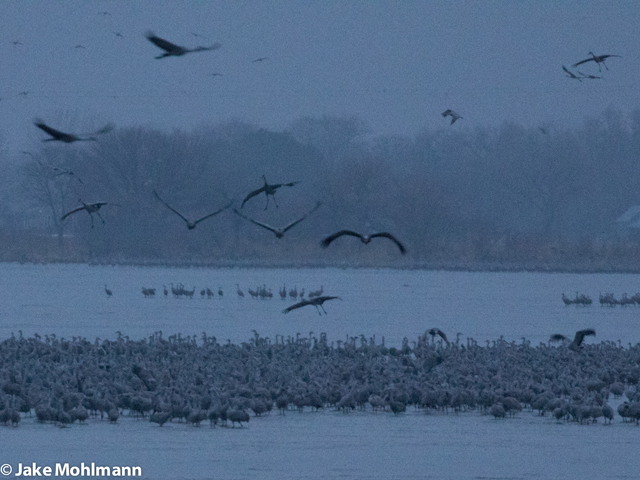
Sunrise was unforgettable with thousands of Sandhill Cranes for company.
Waterfowl also abound this time of year and we had fun picking out the less common species like male Hooded Mergansers showing their namesake well, velvety Canvasbacks in just one location, and a pair of beautiful Trumpeter Swans defending their nesting location from the encroaching Canada Geese.
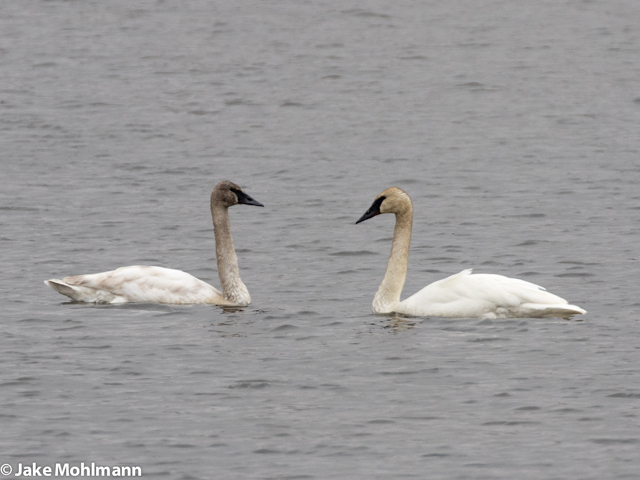
A pair of Trumpeter Swans along the South Loupe River.
A couple of blinds set up seemingly in the middle of nowhere did have a purpose as we sat and watched both Greater Prairie-Chickens and Sharp-tailed Grouse practice their dance moves at close range. At least 11 Grouse were amazing to watch as they stamped their feet, stretched out their wings, and tried to outmatch each other for the right to ensure the brief company of at least one female for the upcoming breeding season.
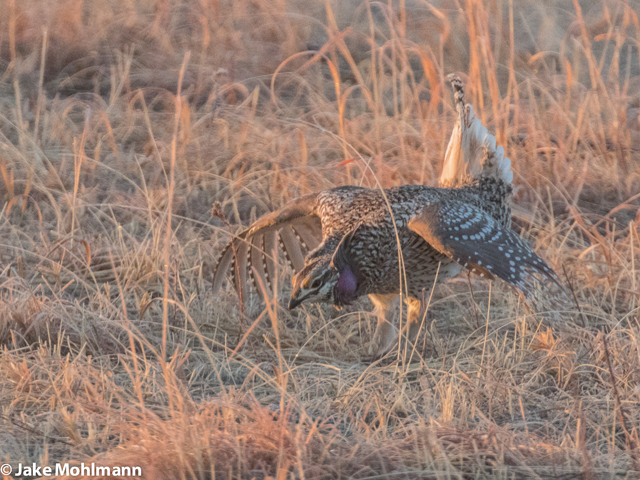
A male Sharp-tailed Grouse performing in the day's first rays of light.
February 24:
Gavin Bieber on his recently completed cruise, New Zealand, the Tasman Sea and Australia
Seabirding from the comfortable open bow on deck eight gives one a remarkably good view of the surrounding waters. On our at-sea days we tallied an impressive 38 species of tubenose.
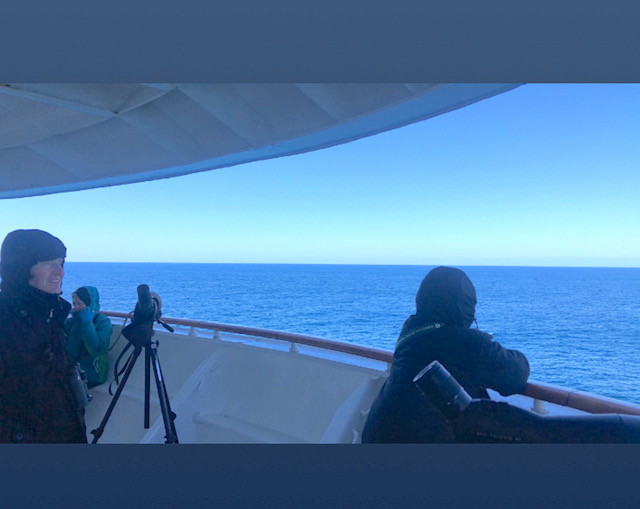
Some, like Buller’s Shearwater, Cook’s Petrel, and Australasian Gannet were plentiful and seen on most days in the field.
Around New Zealand waters we found a few Cape Petrels as well as a nice selection of albatrosses including Northern Royal and Salvin’s (here with a Northern Royal).
Crossing the Tasman Sea we picked up species like White-headed and Gould's Petrels and a few interesting mammals including these incredible Southern Right-Whale Dolphin.
And on our days off of the Australian Coast we enjoyed lots of Grey-faced Petrels and our last of nine species of albatross, the small and colorful Yellow-nosed.
February 20:
Jake Mohlmann on his just concluded tour, Texas: The Rio Grande Valley in Winter
We just wrapped up another winter tour through the southern tip of Texas. One hundred ninety-three species of birds were detected over our 9 days together.
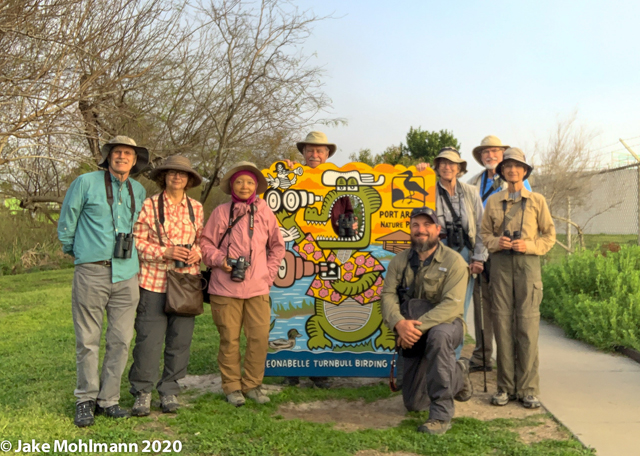
Our group enjoying sunny south Texas weather.
Towards the end of our week in the Lower Valley our third attempt at Morelet’s Seedeater was a success. We watched at length through the scope as a pair fed on grass seeds.
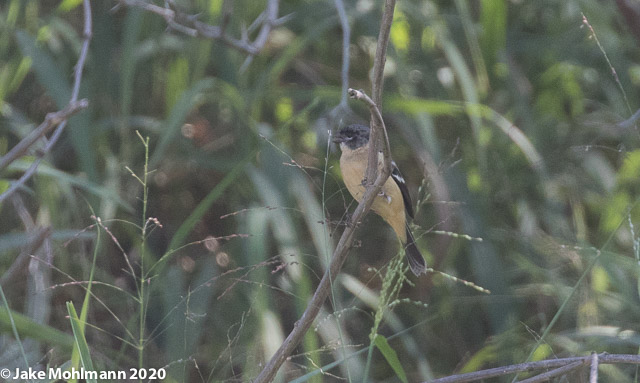
This male Morelet’s Seedeater showed nicely.
Our morning at Chapeno holding vigil at sunrise was a highlight of the tour. Terns were soaring by, a Ringed Kingfisher hovered above, and a male Hooded Oriole glowed in the early morning rays. We knew this was a good decision when we first arrived and had an American Pipit sit within 20 feet of us on the rocks and pose for some really great views.
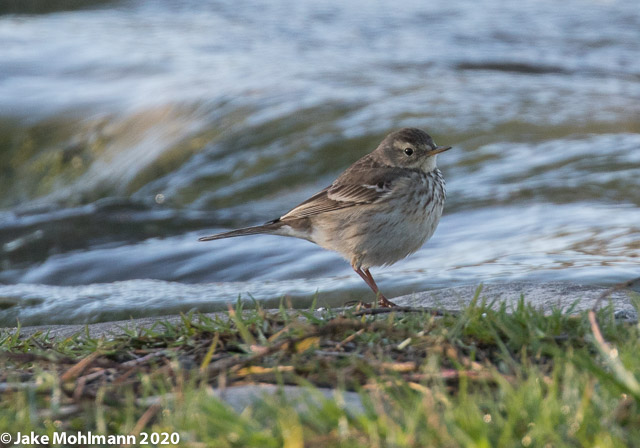
An American Pipit on the banks of the Rio Grande.
Finding shorebirds is always a fun part of this tour. We hit the tides right a couple of times and as a result birds were very close to the roads. A striking and much banded American Oystercatcher landed at our feet near Bahia Grande and proceeded to show us the process of oyster eating.
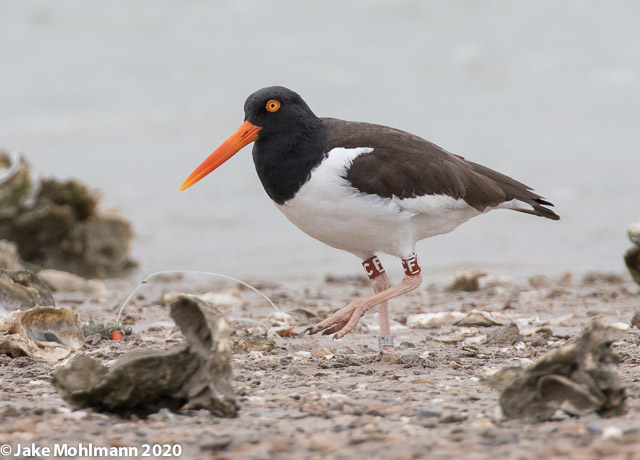
Oysters beware; this birds looking for you.
At Santa Ana National Wildlife Refuge we huddled around a dense willow thicket in awe of an amazing songster that was able to mimic at least 6 other species as we tuned in. Everyone had a guess for the ID and most thought perhaps a thrasher. We were much amazed when our singer revealed itself as a White-eyed Vireo.
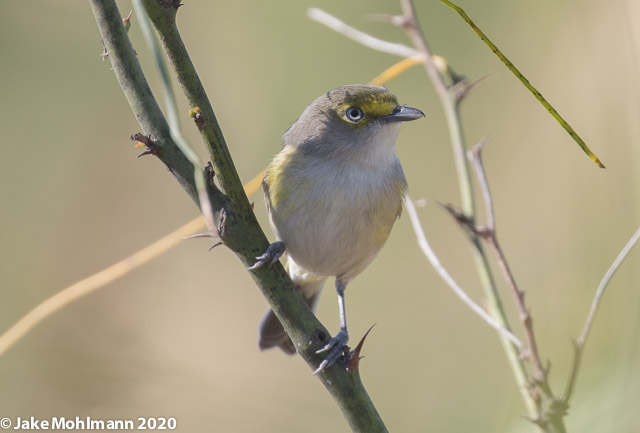
A White-eyed Vireo sang melodiously and with startling variety, and showed well too.
We found rare birds in the mix along the way. Amongst a flock of dowitchers a Pectoral Sandpiper sat quietly trying to blend into the crowd. Maybe it was confused why it wasn’t in Argentina where it should be.
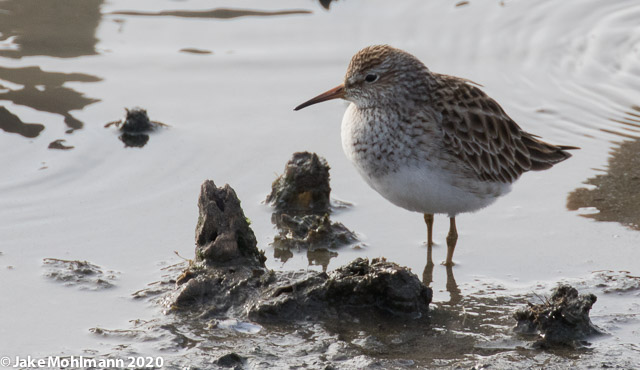
A winter Pectoral Sandpiper was quite rare.
I have to admit a lot of people come on this tour to see Whooping Cranes, and this year proved once again why we visit these birds by boat. Using radar, we headed out through the foggy bay to reach Aransas National Wildlife Refuge and eventually crept ever so close to a pair of Whooping Cranes as they slowly walked through the muddy marsh successfully consuming blue crabs, their winter prey of choice.
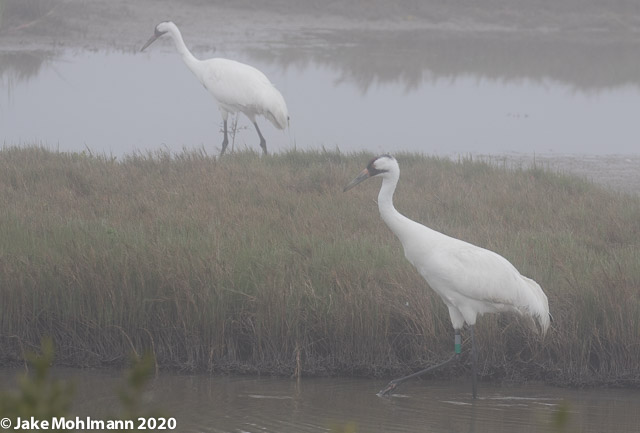
Whooping Cranes hunt in family groups in winter.
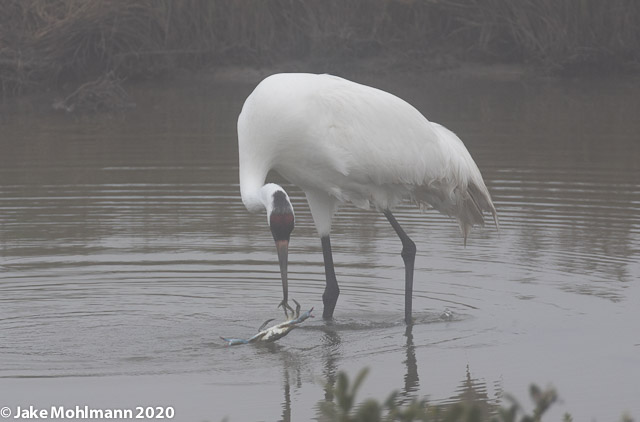
A Blue Crab is no match for a Whooping Crane.
February 11:
Steve Howell and Luke Seitz on their just-completed cruise, Antarctic Peninsula and around Cape Horn
Steve Howell and Luke Seitz report on the inaugural WINGS tour on a Princess cruise ship to Antarctica and around Cape Horn, which definitely exceeded expectations—from Snow Petrel and Emperor Penguin to Magellanic Woodpecker and Andean Condor; from intense blue icebergs dotted with penguins to tens of whales feeding all around the ship amid icy scenic grandeur; and switching oceans from Atlantic Petrel and Yellow-nosed Albatross in the South Atlantic to Juan Fernandez Petrel and Buller’s Albatrosses in the Humboldt Current. Such a trip is impossible to convey in words or even in a few images. But we’ll try...
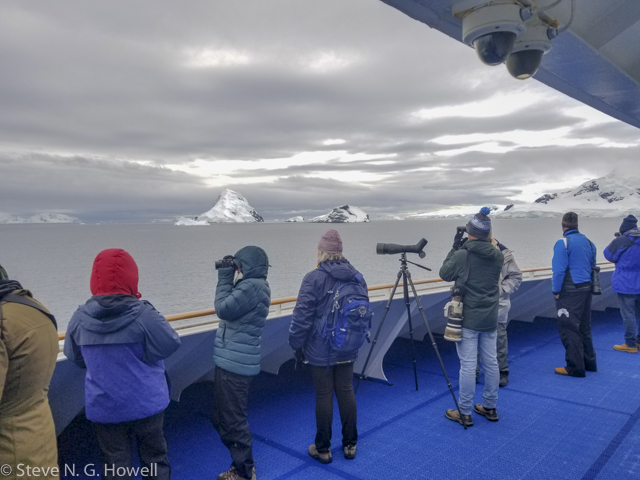
Just another Antarctic vista as we scanned for penguins and whales.
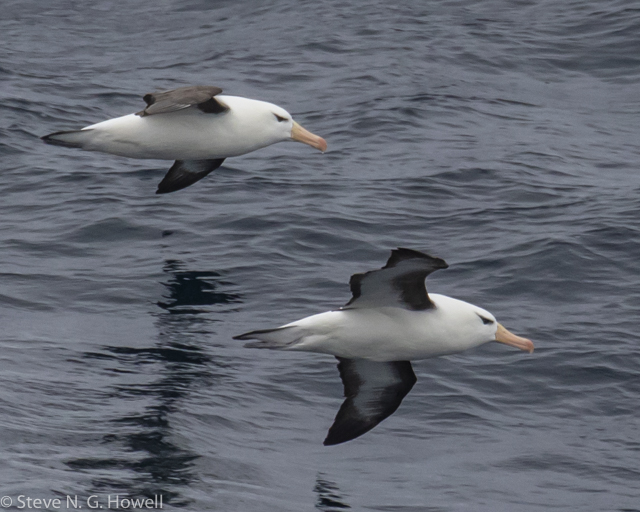
Seeing 12 of the world’s 24 albatross species on the trip was notable, from the almost daily but always handsome Black-browed...
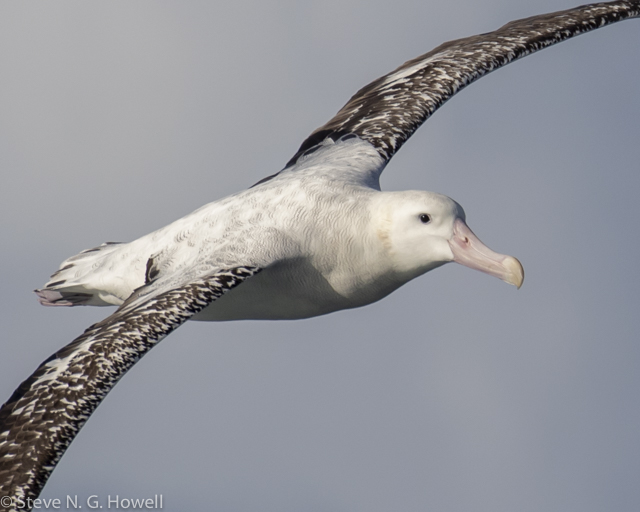
...to the huge Wandering Albatrosses, at times almost sailing past at arm’s length and allowing great comparisons of the various taxa—here a (presumed) Snowy Wandering...
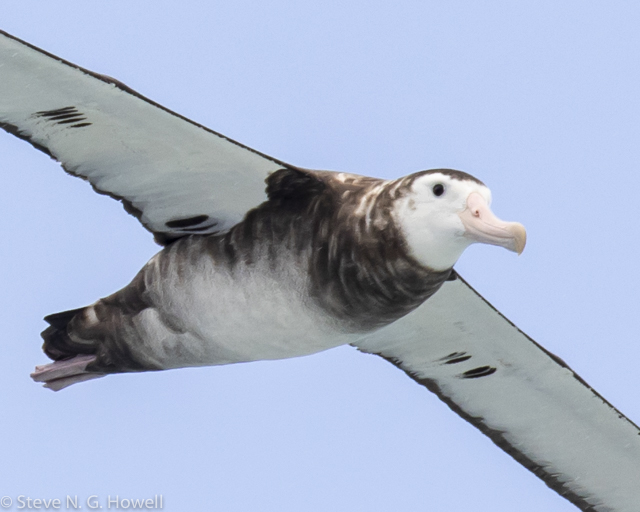
... and here, within the same minute, a distinctive Antipodes Wanderer.
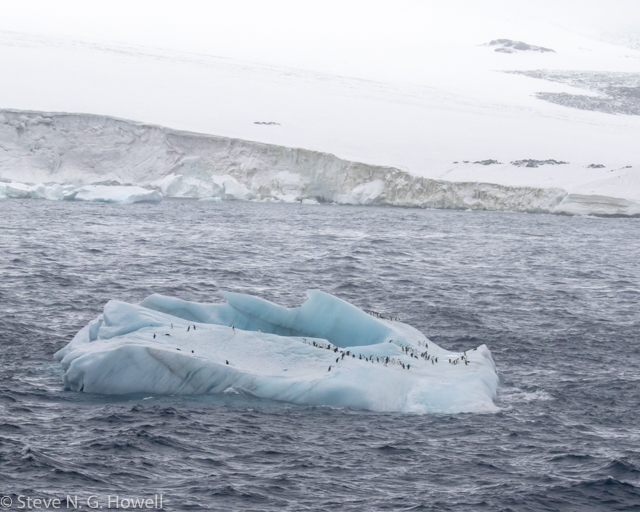
Penguins of course are synonymous with this region, whether Adelie Penguins on icebergs...
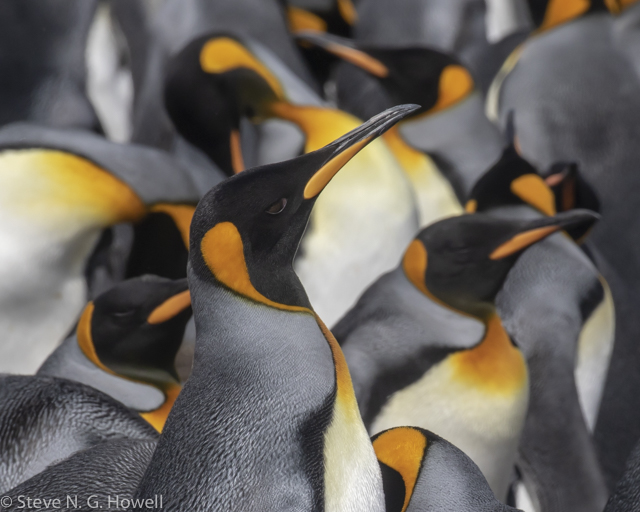
...the up-close-and-personal colony of King Penguins at the Falklands...
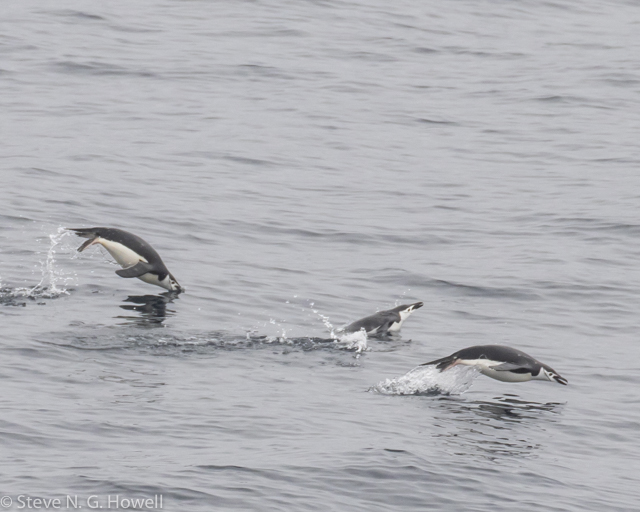
...or Chinstrap Penguins porpoising in their marine element.
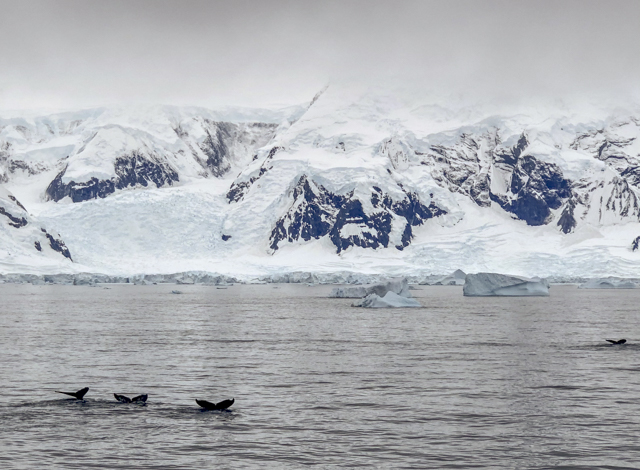
Some Humpback Whales feeding amid scenery. © Luke Seitz
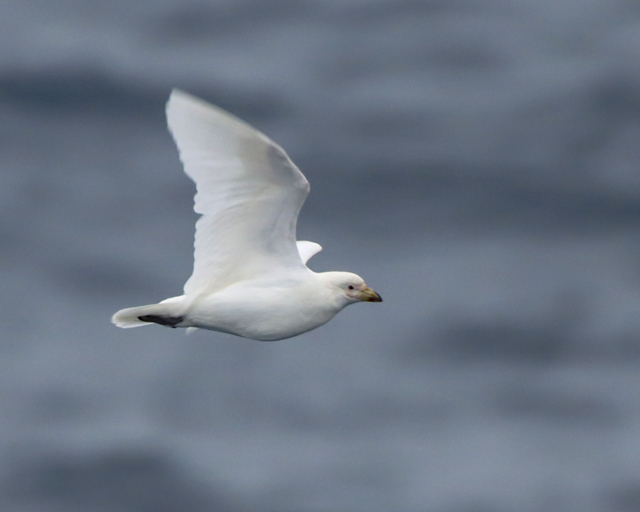
Snowy Sheathbills flew out to visit the ship a few times... © Luke Seitz
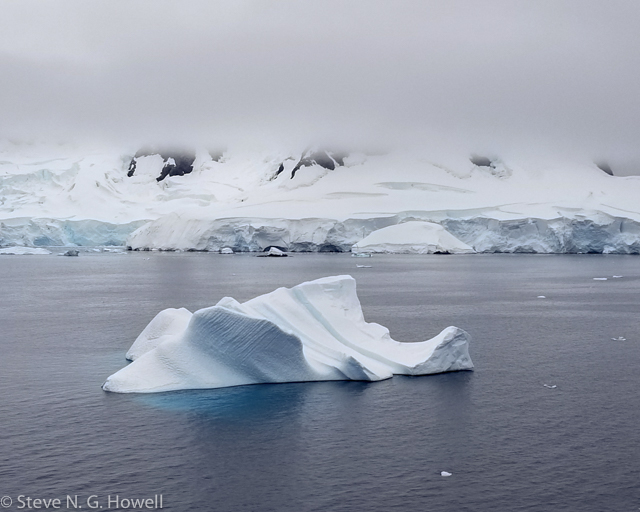
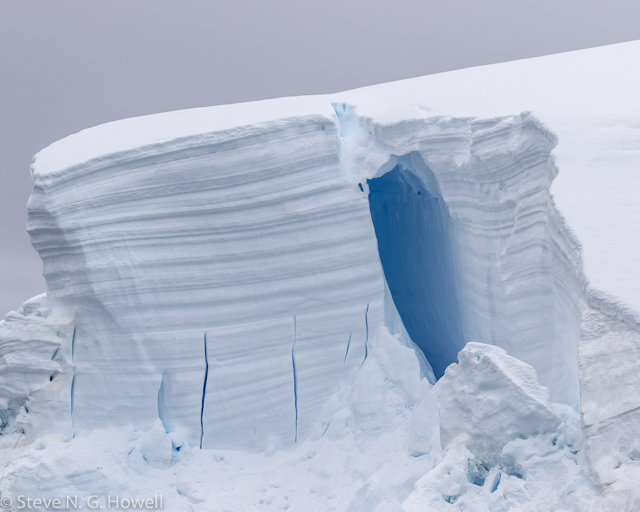
...distracting us from the infinite shapes and shades of glaciers and icebergs.
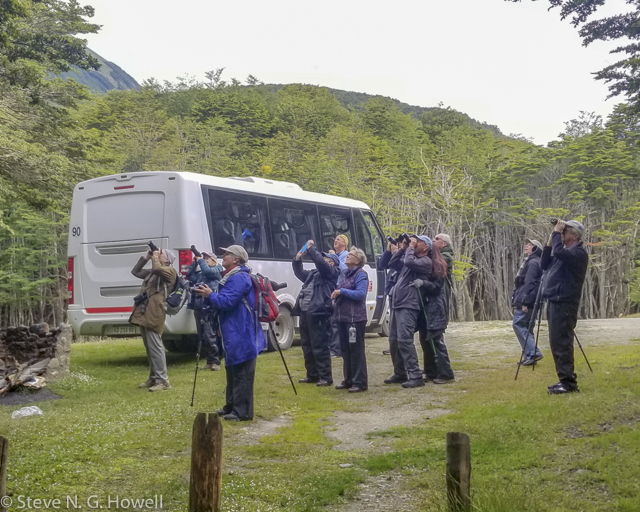
It wasn’t all seabirds, and here the group enjoyed an obliging male Magellanic Woodpecker
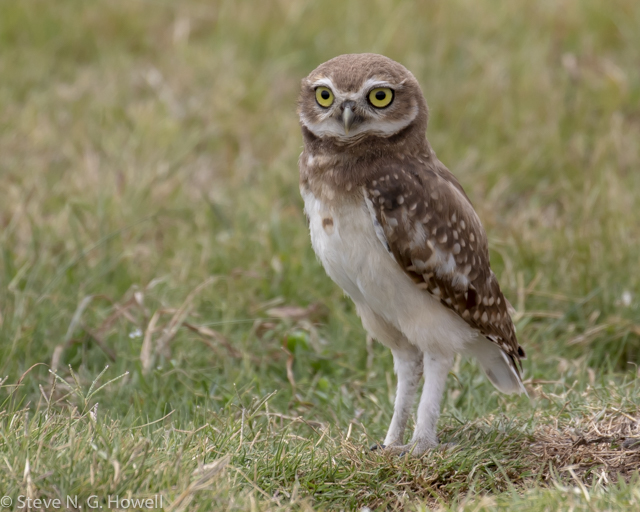
This young Burrowing Owl in Uruguay was another non-seabird highlight.
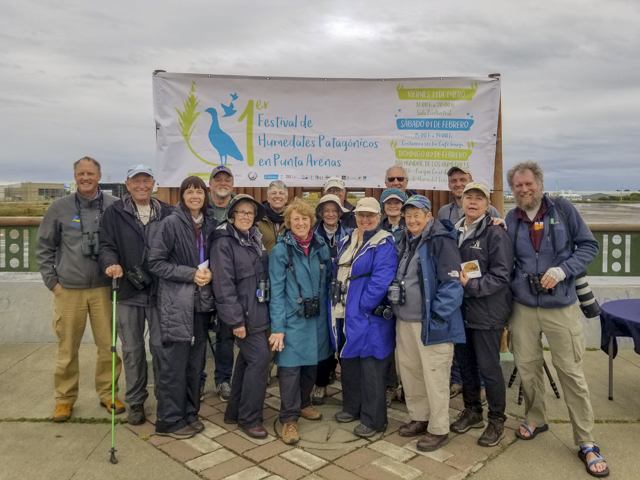
And lastly, the tour coincided with the first Patagonian Wetlands Birding Festival in Punta Arenas, where we added an international flavor to the event, held on International Wetlands Day.
February 4:
Jake Mohlman on his recently completed tour, Arizona: A Winter Week in the Southeast
Our winter week in Southeastern Arizona covered just over 1,000 miles of mostly paved, scenic roads while searched for any wildlife that would allow viewing. Some highlights of the 143 species of birds seen included a very cooperative male Hepatic Tanager in Madera Canyon, a petite Western Screech-Owl catching the first rays of sun in its roost hole, and a family group of Mexican Chickadees at 8,000 feet in the stunning Chiricahua Mountains.
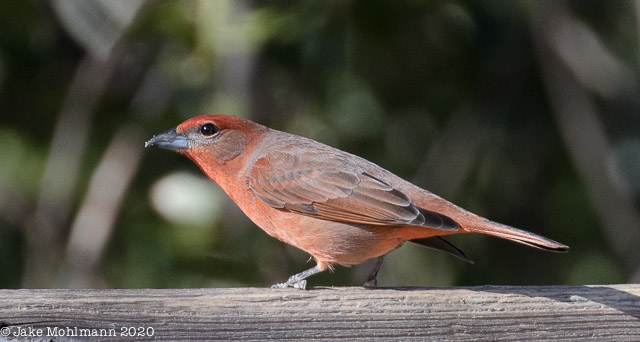
A male Hepatic Tanager showed nicely.
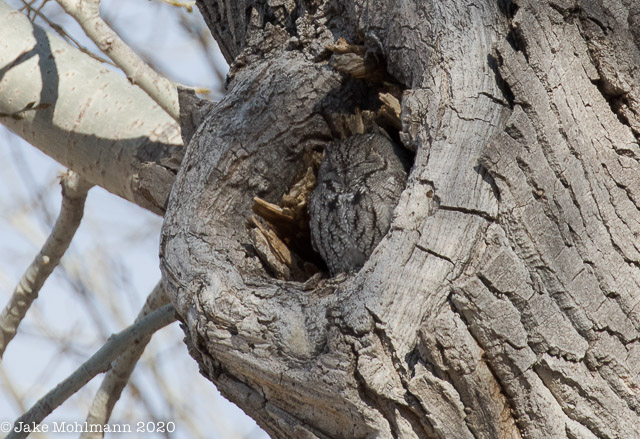
This Western Screech-Owl blended in perfectly.
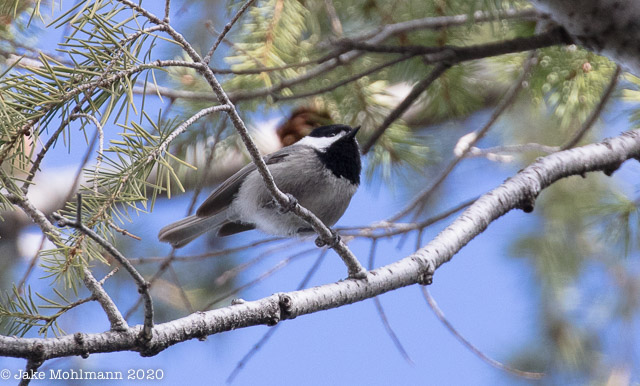
Mexican Chickadee was the target on our day in Portal.
We always round out the trip with a run through the parks in and around Tucson where there are usually a few rare birds to be seen. This year a wintering Greater Pewee was found at Reid Park, and not too far away a Plumbeous Vireo came in for close looks.
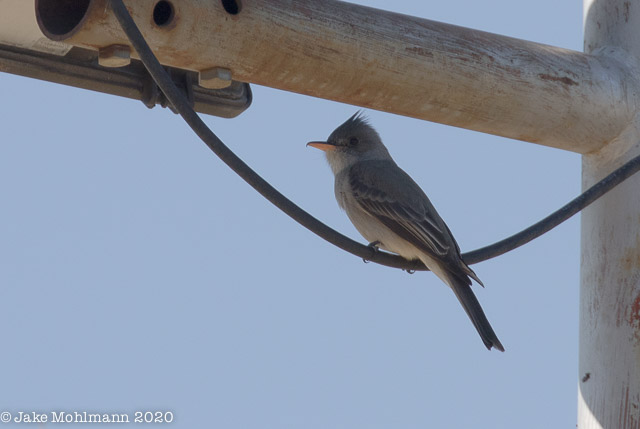
Greater Pewee was a rare winter treat.
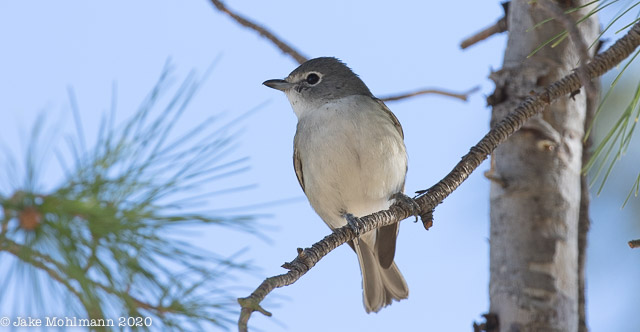
A Plumbeous Vireo came in for inspection.
Although temperatures weren’t too cold this year, birds were huddled close in the early mornings at our very comfortable Bed & Breakfast. Inca Doves sat two abreast in order to ward off the chill, and the emblematic Cactus Wren greeted us daily before we headed out on our adventures.
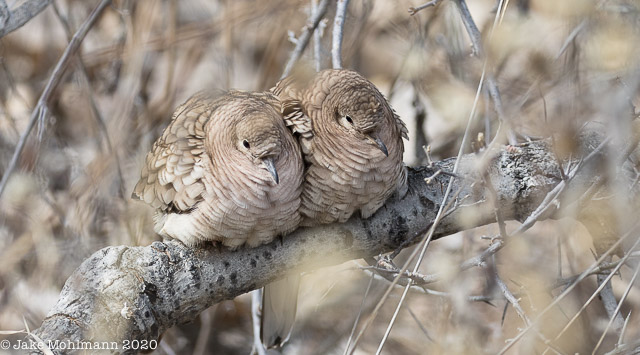
A pair of Inca Doves couldn’t get closer.
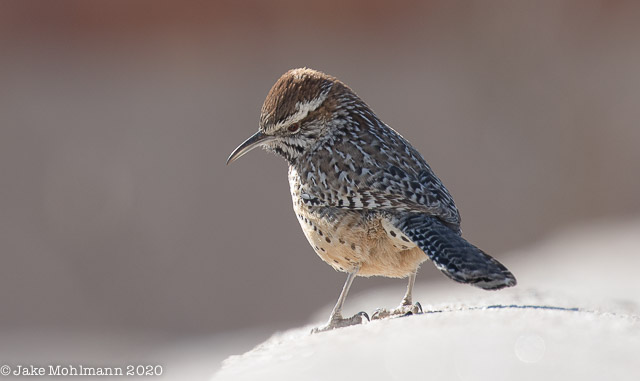
Cactus Wrens were seen daily.
There were many ID challenges that we worked on throughout the week. One such case is differentiating the Curve-billed and Bendire’s Thrashers. After looking at about a dozen Curve-billed, and much to our delight, we finally tracked down a much rarer Bendire’s. In this same valley we experienced the unbelievable experience of watching as many as 8,000 Sandhill Cranes come in to loaf mid-day in the famed Sulphur Springs Valley.
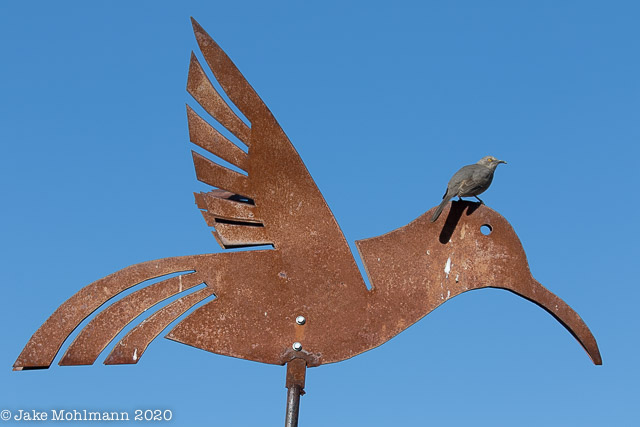
Curve-billed Thrasher, not to be confused with the much rarer...
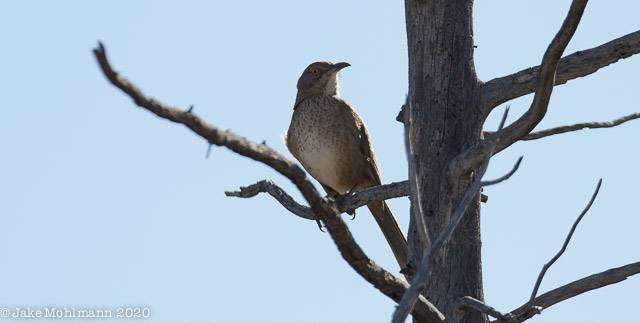
…and harder to find Bendire’s Thrasher.
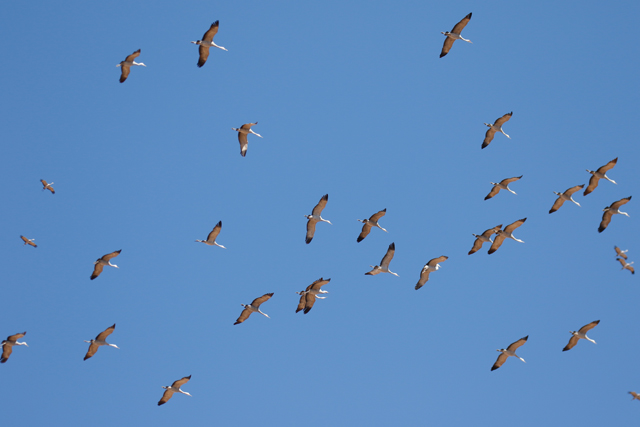
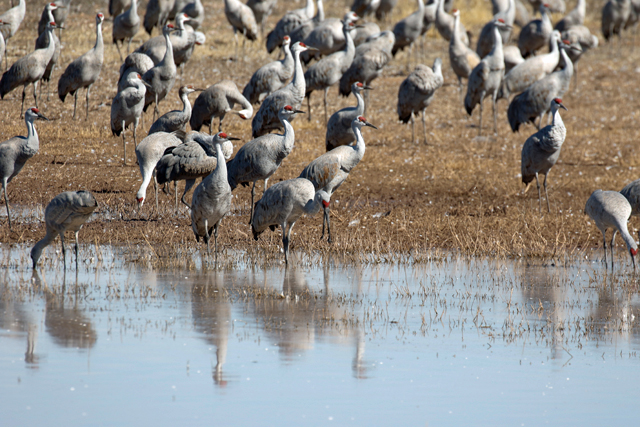
Just a few of the thousands of Sandhill Cranes seen in one day.
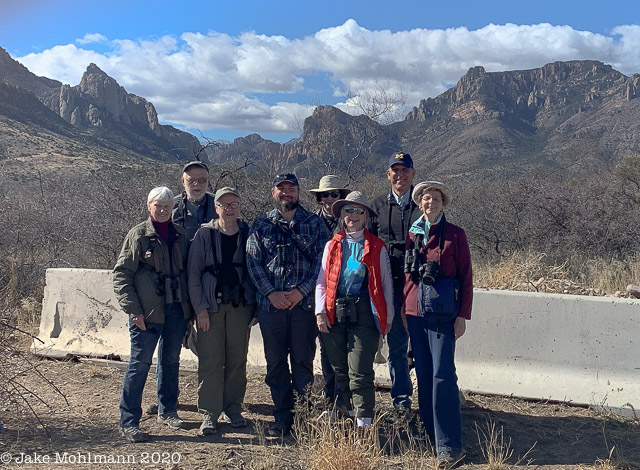
Our group excited to visit Cave Creek Canyon waiting in the distance.
January 19:
Jared Clarke on his recently concluded winter tour in Newfoundland
Our popular “Newfoundland in Winter” tour has drawn to a close for yet another year, with five intrepid birders braving the elements to score some wonderful winter birds. Participants came from throughout the United States to enjoy the diversity of northern species that call this island home – and they were not disappointed. Early surprises came in the form of rare visitors from very different directions – a Pink-footed Goose from Europe and a Hermit Warbler from western North America! Always a highlight, Dovekies (aka “bullbirds” to local Newfoundlanders) put in an excellent showing and even allowed some very (very!) close encounters. After a couple early misses, we also connected with two flocks of Purple Sandpipers – a special moment for several of our guests. Local celebrities such as Great Cormorants, Eurasian Wigeon and several dozen Tufted Ducks were of course on full display. Extra time spent exploring the sub-arctic tundra were rewarded with great views of some of the world’s southernmost caribou foraging in the snow. A beautiful encounter with two Willow Ptarmigan on our last afternoon rounded off a fantastic week of winter birding in the North Atlantic!
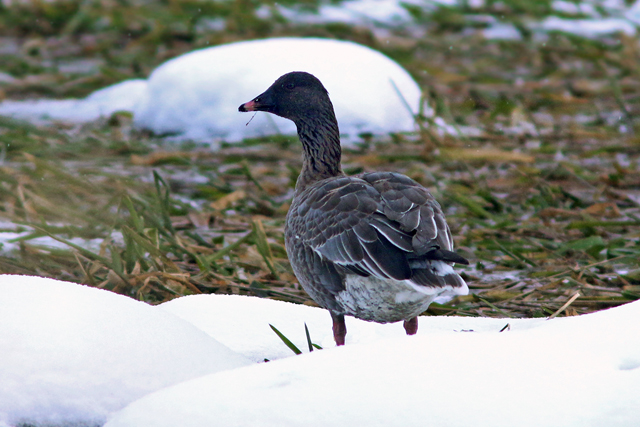
Pink-footed Goose
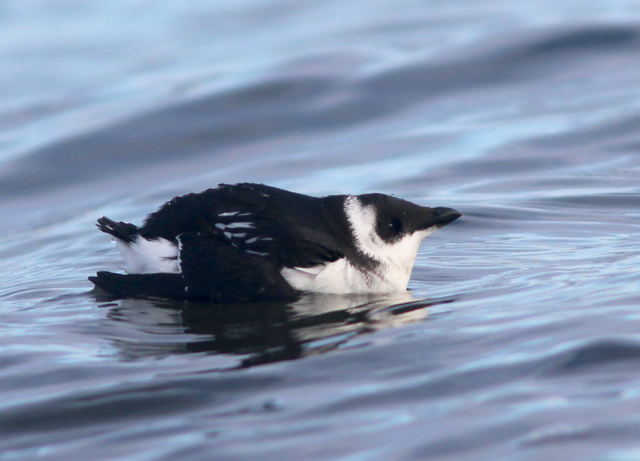
Dovekie
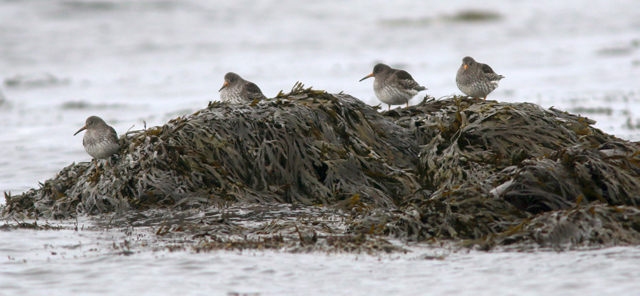
Purple Sandpiper
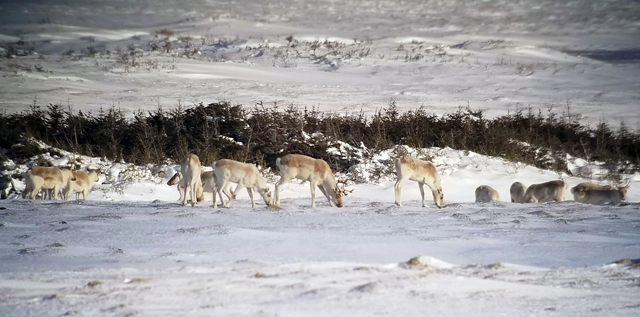
Caribou
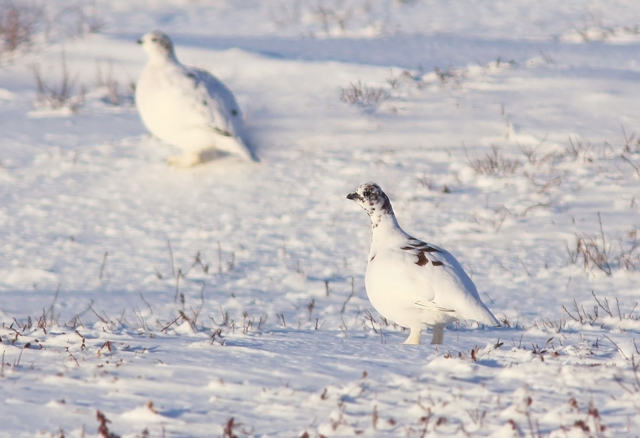
Willow Ptarmigan
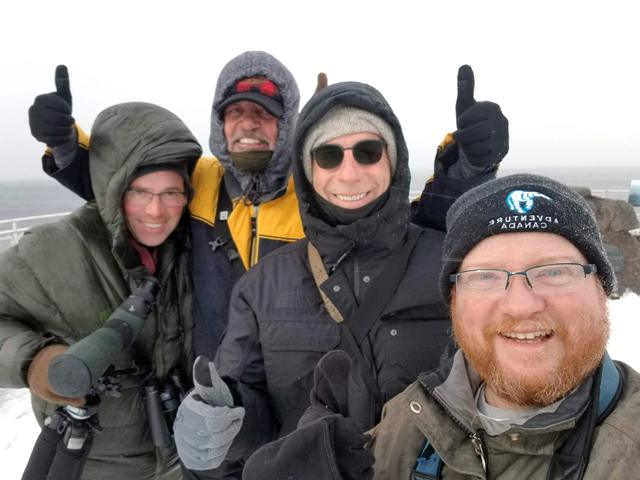
Winter birding in Newfoundland is a wonderful experience

